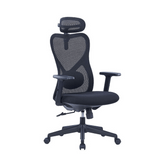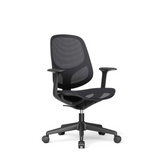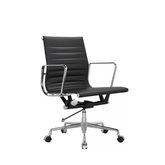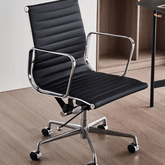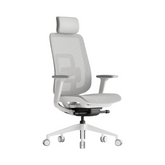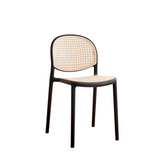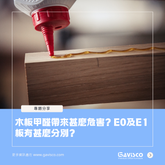Understanding the Mystery of Gas Lift Sinking Office Chair: Causes and Solutions
Introduction
Have you ever experienced the frustration of sitting in your office chair, only to find yourself sinking down unexpectedly? If so, you're not alone. Many people encounter this issue, and it can be both annoying and detrimental to your productivity. In this article, we will explore the reasons why your office chair keeps going down or sinking, and provide you with practical solutions to address this problem. By understanding the underlying causes and implementing the appropriate fixes, you can regain control over your chair's height and enjoy a comfortable and stable seating experience. Let's dive into the mystery of the sinking office chair!
Table of Contents:
- The Importance of a Stable Office Chair
- Common Causes of a Sinking Office Chair
- Damaged or Worn Out Gas Lift Cylinder
- Loose or Faulty Height Adjustment Mechanism
- Overloaded Weight Capacity
- Air Leakage in the Gas Lift Cylinder
- Solutions to Fix a Sinking Office Chair
- Replace the Gas Lift Cylinder
- Tighten or Repair the Height Adjustment Mechanism
- Observe Weight Capacity Limits
- Seal Air Leaks in the Gas Lift Cylinder
- Conclusion
- Frequently Asked Questions (FAQ)
1. The Importance of a Stable Office Chair
A stable office chair is essential for maintaining proper posture, preventing discomfort, and promoting productivity. When your chair keeps sinking, it not only disrupts your workflow but also poses potential health risks. A constantly changing seat height can lead to poor ergonomics, strain on your back and neck, and overall discomfort. It's crucial to address this issue promptly to create a stable and supportive seating environment.
2. Common Causes of a Sinking Office Chair
Understanding the root causes of a sinking office chair is the first step towards finding a solution. Here are some common culprits:
Damaged or Worn Out Gas Lift Cylinder
The Gas Lift Cylinder is responsible for the height adjustment feature of your office chair. Over time, it can become damaged or worn out, causing the chair to sink. This can happen due to regular wear and tear, excessive weight, or poor quality materials.
Loose or Faulty Height Adjustment Mechanism
The height adjustment mechanism, typically controlled by a lever or knob, can become loose or faulty over time. If this mechanism is not securely tightened or if its internal components are damaged, it can result in a sinking chair.
Overloaded Weight Capacity
Office chairs have weight capacity limits that should not be exceeded. If you consistently place excessive weight on your chair, it can put strain on the Gas Lift Cylinder, causing it to weaken and eventually lead to sinking.
Air Leakage in the Gas Lift Cylinder
Air leakage is another common issue that can cause a sinking office chair. If there are leaks in the Gas Lift Cylinder, the air pressure necessary to keep the chair at the desired height will gradually decrease, resulting in sinking.
3. Solutions to Fix a Sinking Office Chair
Now that we've identified the potential causes, let's explore the solutions to fix a sinking office chair:
Replace the Gas Lift Cylinder
If the Gas Lift Cylinder is damaged or worn out, the most effective solution is to replace it. Contact the manufacturer or a professional chair repair service to obtain a compatible replacement cylinder. Follow the manufacturer's instructions or seek professional assistance to ensure proper installation.
Tighten or Repair the Height Adjustment Mechanism
If the height adjustment mechanism is loose or faulty, it may need to be tightened or repaired. Inspect the mechanism for any loose screws or damaged components. Use the appropriate tools to tighten or replace any necessary parts. If the mechanism is severely damaged, consider consulting a professional for repair or replacement.
Observe Weight Capacity Limits
Ensure that you are not exceeding the weight capacity limits of your office chair. If you consistently place excessive weight on the chair, it can lead to premature wear and tear of the Gas Lift Cylinder. If necessary, consider upgrading to a chair with a higher weight capacity to avoid future sinking issues.
Seal Air Leaks in the Gas Lift Cylinder
If you suspect air leakage in the Gas Lift Cylinder, there are a few methods to address this issue. First, check for visible signs of damage or cracks in the cylinder. If found, replace the cylinder as mentioned earlier. If no visible damage is present, you can try applying a lubricant or silicone spray to the cylinder's seals to create a better seal and prevent air leakage. However, this is a temporary solution, and replacing the cylinder is the most effective long-term fix.
4. Conclusion
A sinking office chair can be a frustrating and uncomfortable experience. By understanding the common causes and implementing the appropriate solutions, you can regain control over your chair's height and enjoya stable and supportive seating experience. Remember to regularly inspect your office chair for any signs of damage or wear, and address any issues promptly to prevent further sinking.
In conclusion, a sinking office chair can be caused by various factors such as a damaged Gas Lift Cylinder, loose height adjustment mechanism, exceeding weight capacity, or air leakage. By replacing the Gas Lift Cylinder, tightening or repairing the height adjustment mechanism, observing weight capacity limits, and sealing air leaks, you can effectively fix a sinking office chair and ensure a comfortable and stable seating experience.
5. Frequently Asked Questions (FAQ)
Q1: Why does my office chair keep sinking?
A1: There are several possible reasons for a sinking office chair, including a damaged Gas Lift Cylinder, loose height adjustment mechanism, exceeding weight capacity, or air leakage in the cylinder.
Q2: Can I fix a sinking office chair myself?
A2: Depending on the cause of the sinking, you may be able to fix it yourself. However, if you're unsure or uncomfortable with DIY repairs, it's best to consult a professional or contact the manufacturer for assistance.
Q3: How do I know if the Gas Lift Cylinder is damaged?
A3: Look for signs of wear, cracks, or visible damage on the Gas Lift Cylinder. If you notice any of these, it's likely that the cylinder needs to be replaced.
Q4: What should I do if my office chair exceeds the weight capacity?
A4: If your office chair consistently exceeds the weight capacity, consider upgrading to a chair with a higher weight limit to avoid future sinking issues and ensure your safety and comfort.
Q5: Is air leakage in the Gas Lift Cylinder a common problem?
A5: Yes, air leakage in the Gas Lift Cylinder is a common issue that can cause a sinking office chair. It's important to address this problem by either replacing the cylinder or applying a lubricant or silicone spray to the seals as a temporary solution.
Remember, maintaining a stable and comfortable office chair is crucial for your productivity and overall well-being. By addressing the sinking issue promptly and implementing the appropriate solutions, you can enjoy a supportive seating experience that enhances your work efficiency.
Gavisco Premium Office Furniture - Elevate Your Workspace
